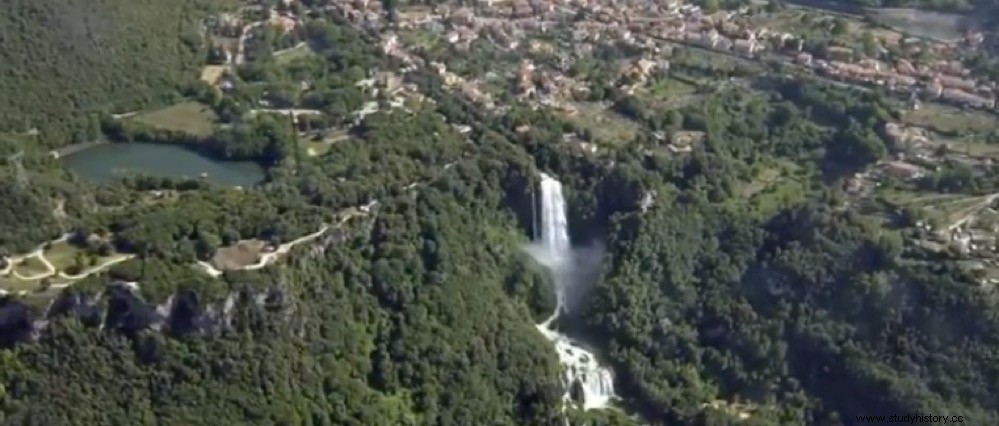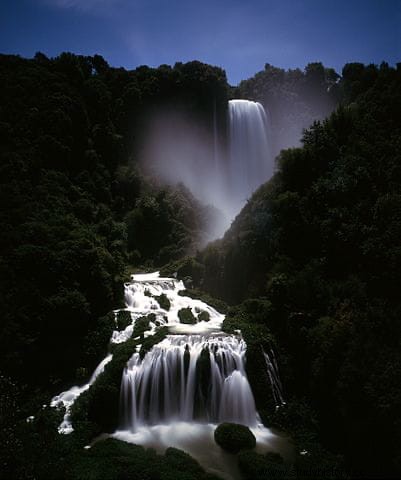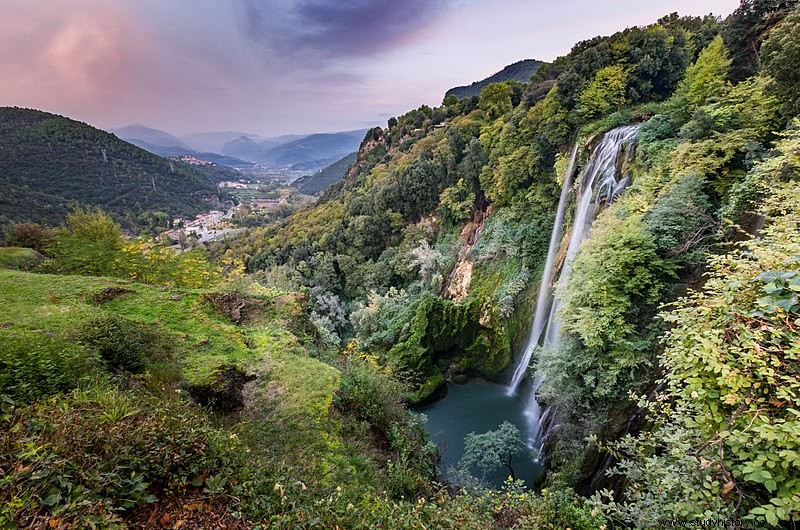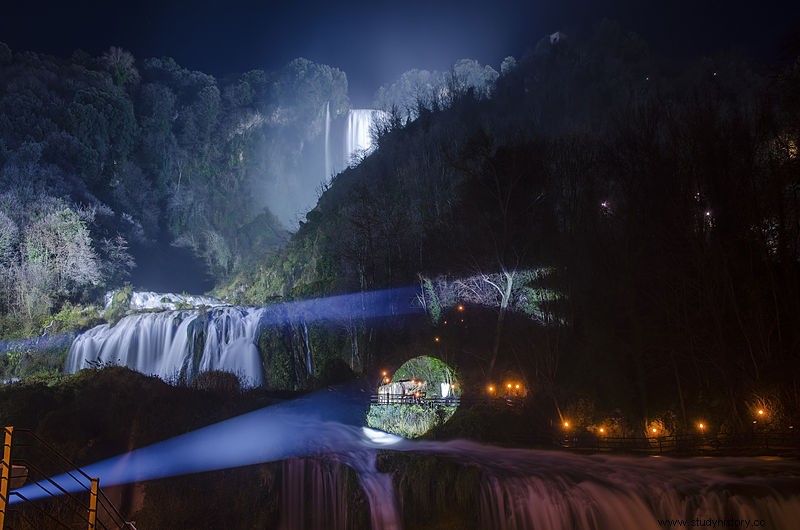At the end of the long Valnerina valley, near the town of Marmore in Italian Umbria, there is a 165-meter-high waterfall divided into three falls, one of the highest in Europe.
A part of the flow of the Velino River, which flows from Lake Piediluco, rushes down the fall to flow into the Nera River. Over the centuries this water has excavated and carved caves with stalactites and stalagmites, which can also be visited.
However, it is not a natural accident, but was created artificially in the days of the Roman Republic, in the year 271 BC, to solve a problem. Thus, it is considered the highest artificial waterfall in the world.

It turns out that as it passed through the town of Rieti, the Velino river ran into a series of calcareous massifs that caused the water to be dammed up in times of heavy rains, forming a swamp that was called, like the river, Lake Velino. This swamp caused flooding in the lands of the Sabine farmers of Rieti, as well as being a major source of disease.
Consul Mario Curio Dentato took action on the matter, in the face of complaints from Rieti, and ordered the construction of a canal, the Cavo Curiano , so that the waters flowed towards the Marmore natural waterfall and, from there, to the Nera, which is a tributary of the Tiber, thus connecting both hydrographic basins.

Unfortunately Curio's solution created another problem. Now the Nera river carried so much water that it threatened to flood the city of Terni (ancient Interamna), which caused a bitter dispute between the two towns that lasted for more than two centuries, until the case finally reached the Roman Senate.
It happened in the year 54 BC. and the lawyers of both parties faced each other before the senators. Rieti hired the services of one of the toughest lawyers of the time, Marcus Tullius Cicero, who had just returned to Rome after a couple of years in exile.
Those from Terni opted for Quinto Hortensio Hórtalo, who had a bad reputation for habitually defending those accused of corruption (and winning the trials).

Some cite Aulus Pompey as the Terni's advocate, though it is more likely that it was Hortensius. And it is that from the year 63 a.C. Cicero and Hortensius, staunch rivals, always accepted the same cases, facing each other again and again in court. On each of these occasions Hortensius let Cicero have the last word, a strategy that some believe was nothing more than recognition of his opponent's mastery, but others consider premeditated.
In the case of the river, the winner is unknown, so it is generally considered that the matter was settled, and the water continued to fall through the Marmore waterfall for centuries, with the consequent inconvenience for Terni.

In the year 15 AD, during the reign of Tiberius, the issue was still being discussed without reaching any agreement, as Tacitus recounts:
The fall of the Western Roman Empire compounded the problem. The canal was no longer maintained and the swamp reappeared in Rieti. It was not until 1422, when a new canal was built to restore the course of the river towards the waterfall, in which Pope Gregory XII was involved and that is why it is known as Cavo Gregoriano or Cavo Reatino .

In 1589 another pope, Clement VIII, added a dam to regulate the flow. But the Nera floods in Terni continued. In 1700 Pius VI solved the problem definitively. He commissioned the work to the architect Andrea Vici, who made a diagonal cut in the second jump of the waterfall, diverting part of the water and forming a lateral waterfall, in order to increase the fall surface and reduce the force of the impact on the bottom of the waterfall. Valley. That was the last intervention and the one that gave the waterfall its current appearance.
Terni ended up taking advantage of an old headache, using the waterfall in hydroelectric power generation since 1896. This is done by regulating its flow, so it is not always possible to see it open to its maximum capacity.
This spectacle is reserved for certain hours (from 12 to 13 and from 16 to 17 hours), in which, upon payment of admission, visitors can contemplate it in all its splendor from two viewpoints, one at the foot and another above it, probably the same places from where Pliny, Cicero, Leonardo da Vinci (whose drawings of the waterfall are preserved), Galileo or Lord Byron, among other illustrious visitors, saw it.
Perhaps more spectacular is the night view, with the place illuminated by a system of LEDs. In any case, the Marmore Waterfall is considered one of the most beautiful landscapes in Italy.
